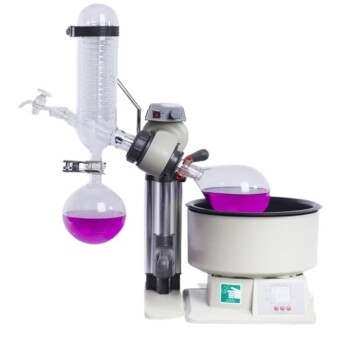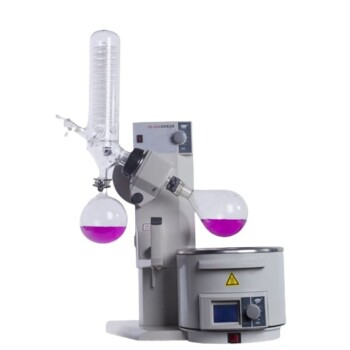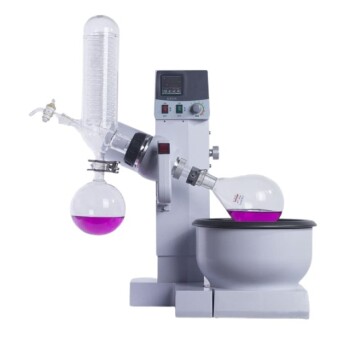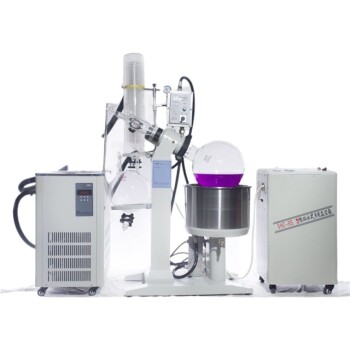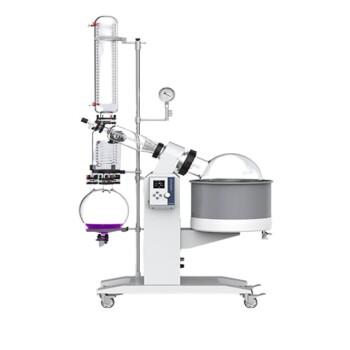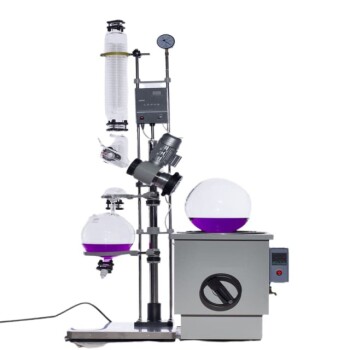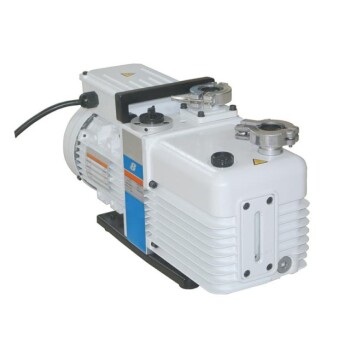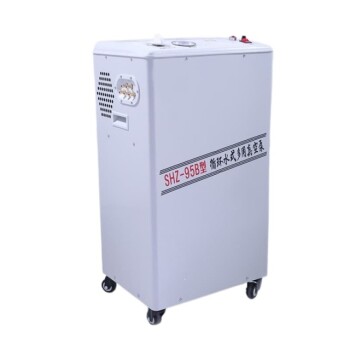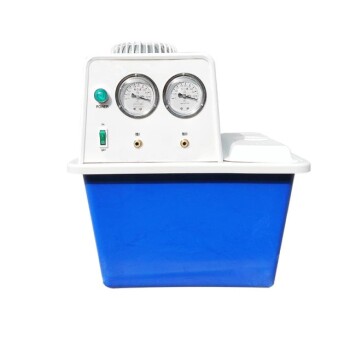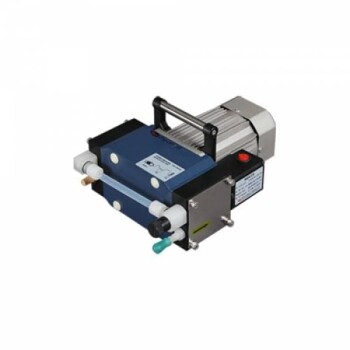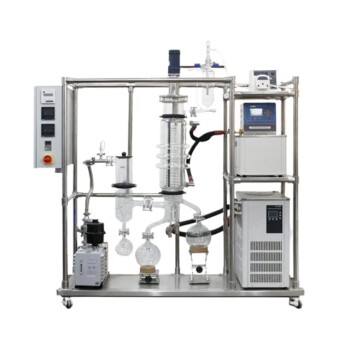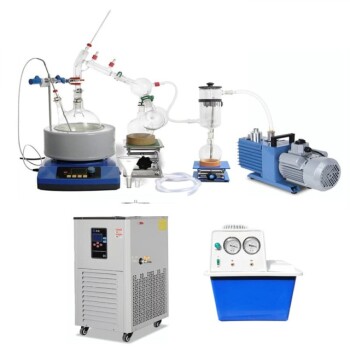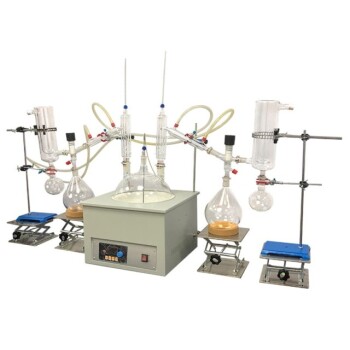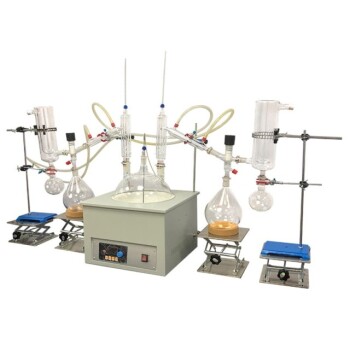A rotary evaporator, or rotovap, is a laboratory device primarily used to remove solvents from a solution, particularly in processes like isolating compounds after chromatography or extraction. The vacuum pump in the rotary evaporator plays a critical role by reducing the pressure within the system, which lowers the boiling point of the solvent. This allows for evaporation at lower temperatures, protecting sensitive samples from thermal degradation. The vacuum also ensures that volatile vapors are safely contained, preventing potential hazards. The combination of rotation, vacuum, and controlled heating enables a gentle and efficient distillation process, making it a staple in organic and chemical laboratories.
Key Points Explained:

-
Purpose of the Rotary Evaporator:
- The rotary evaporator is designed to remove solvents from a solution, particularly in laboratory settings.
- It is commonly used after processes like column chromatography or separatory-funnel extractions to isolate desired compounds.
- It is especially effective for removing low-boiling solvents, which are volatile and evaporate easily under reduced pressure.
-
Role of the Vacuum Pump:
- The vacuum pump creates a low-pressure environment within the rotary evaporator system.
- Lowering the pressure reduces the boiling point of the solvent, allowing it to evaporate at much lower temperatures than it would at atmospheric pressure.
- This is crucial for protecting heat-sensitive compounds from degradation during the evaporation process.
-
Benefits of Lower Boiling Points:
- By evaporating solvents at lower temperatures, the rotary evaporator minimizes the risk of thermal damage to sensitive samples.
- This gentle evaporation process is ideal for compounds that may decompose or react at higher temperatures.
- It ensures a controlled and efficient distillation process, which is essential for maintaining the integrity of the sample.
-
Safety and Containment:
- The vacuum system prevents volatile vapors from escaping into the laboratory environment, reducing potential hazards such as inhalation or fire risks.
- The condenser in the rotary evaporator traps and re-liquefies the vaporized solvent, ensuring it is safely collected and not released into the air.
-
Efficiency in Sample Concentration:
- The rotary evaporator is widely used in organic and chemical laboratories for concentrating samples by evaporating solvents under controlled conditions.
- The combination of rotation (which increases the surface area of the liquid) and vacuum ensures rapid and efficient evaporation, saving time and resources.
-
Applications in Laboratories:
- Rotary evaporators are essential tools in organic synthesis, pharmaceutical research, and chemical analysis.
- They are used for tasks such as solvent recycling, sample purification, and preparation of concentrated solutions for further analysis.
-
Integration of Components:
- The rotary evaporator system includes a rotating flask, a vacuum pump, a condenser, and a heating bath.
- The vacuum pump is applied to the condenser to increase air pressure, which slows down gas movement and enhances the re-liquefaction of vaporized solvents.
By combining these key elements, the rotary evaporator with a vacuum pump provides a safe, efficient, and precise method for solvent removal, making it indispensable in modern laboratory workflows.
Summary Table:
| Key Aspect | Details |
|---|---|
| Purpose | Removes solvents from solutions, isolates compounds after chromatography. |
| Role of Vacuum Pump | Reduces pressure, lowers boiling points, and prevents thermal degradation. |
| Benefits | Gentle evaporation, protects heat-sensitive compounds, ensures efficiency. |
| Safety | Contains volatile vapors, prevents hazards like fire or inhalation risks. |
| Applications | Organic synthesis, pharmaceutical research, chemical analysis, and more. |
| Components | Rotating flask, vacuum pump, condenser, and heating bath. |
Learn how a rotary evaporator can enhance your lab's efficiency—contact us today for expert advice!
